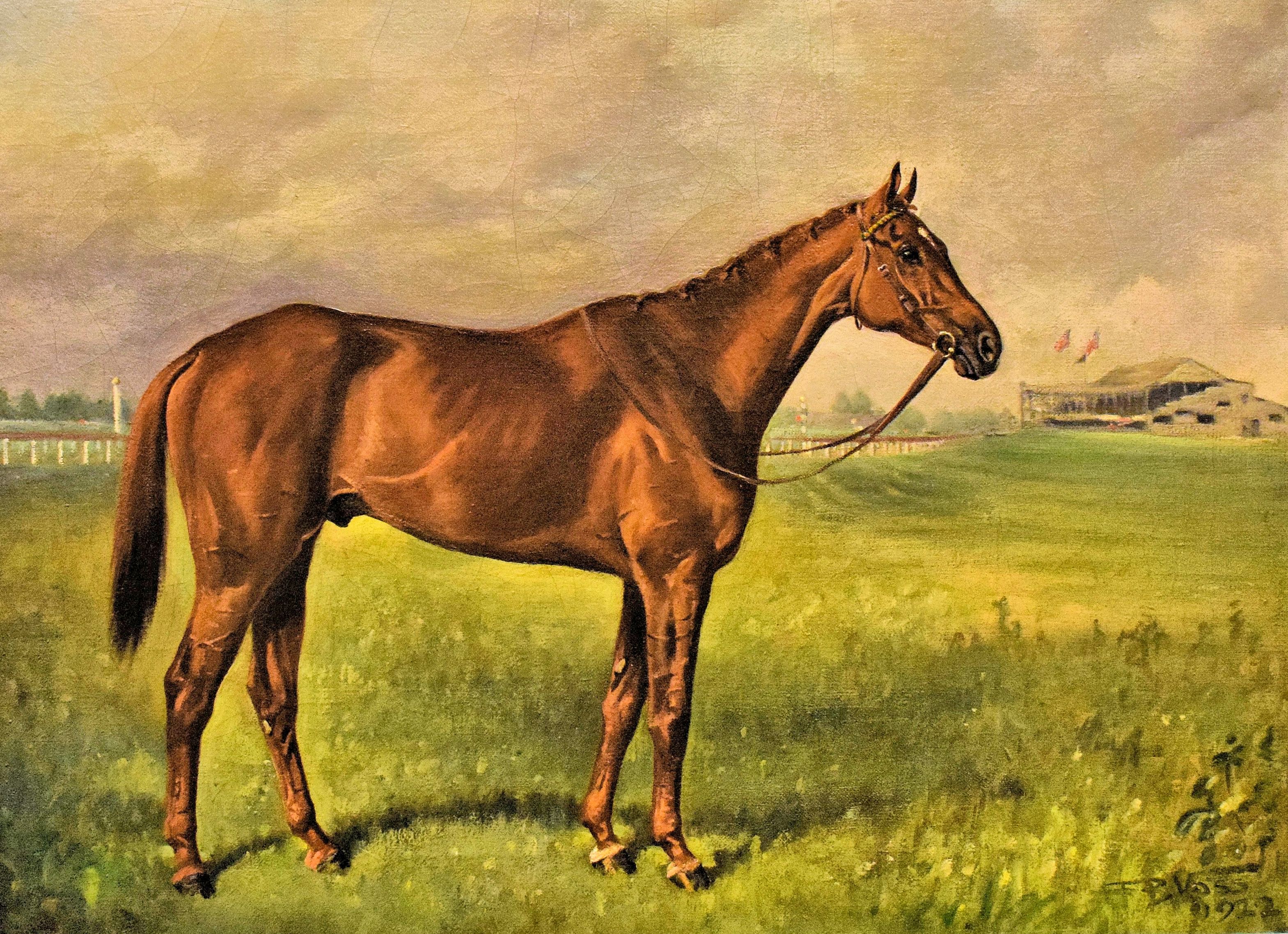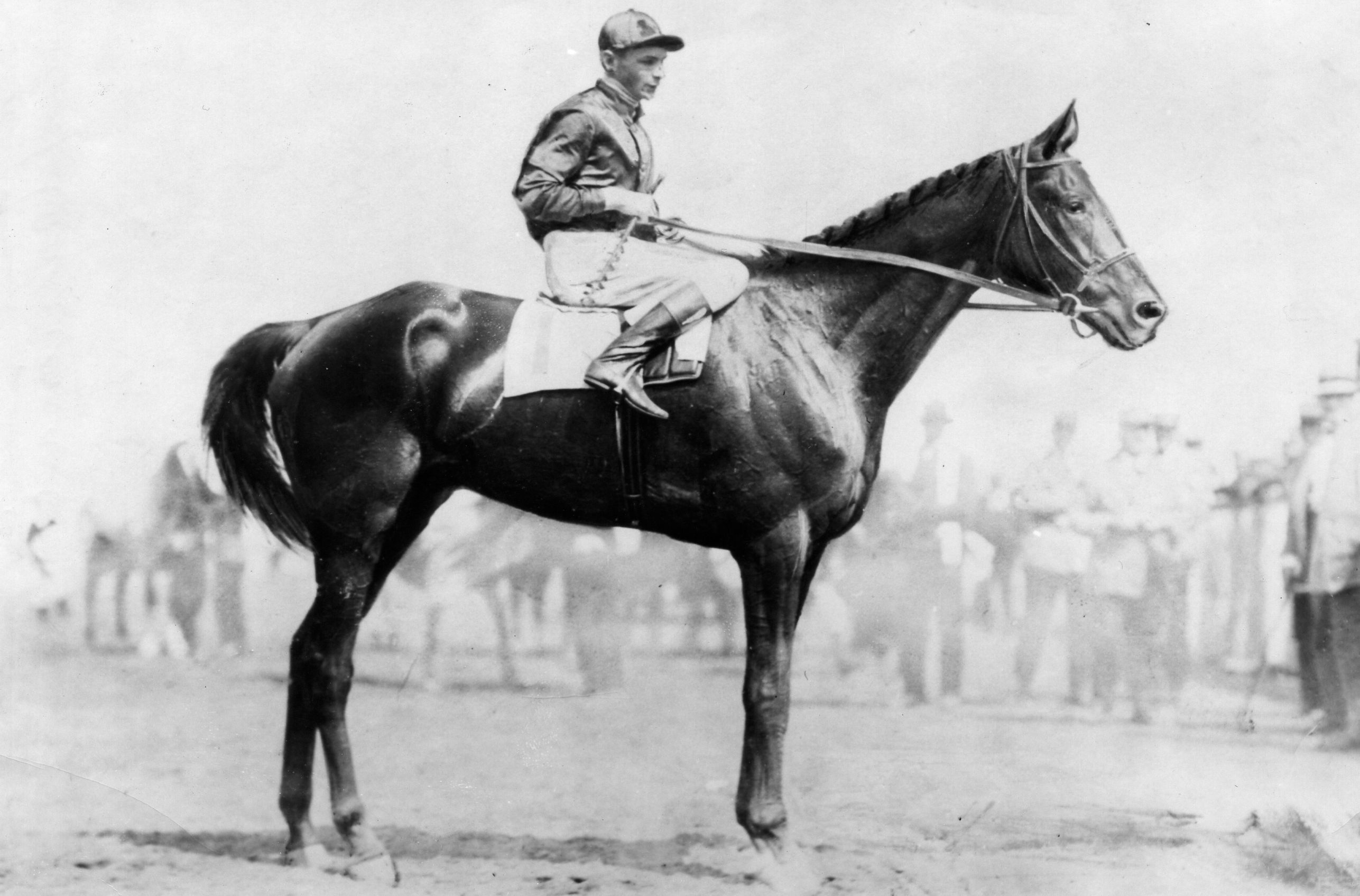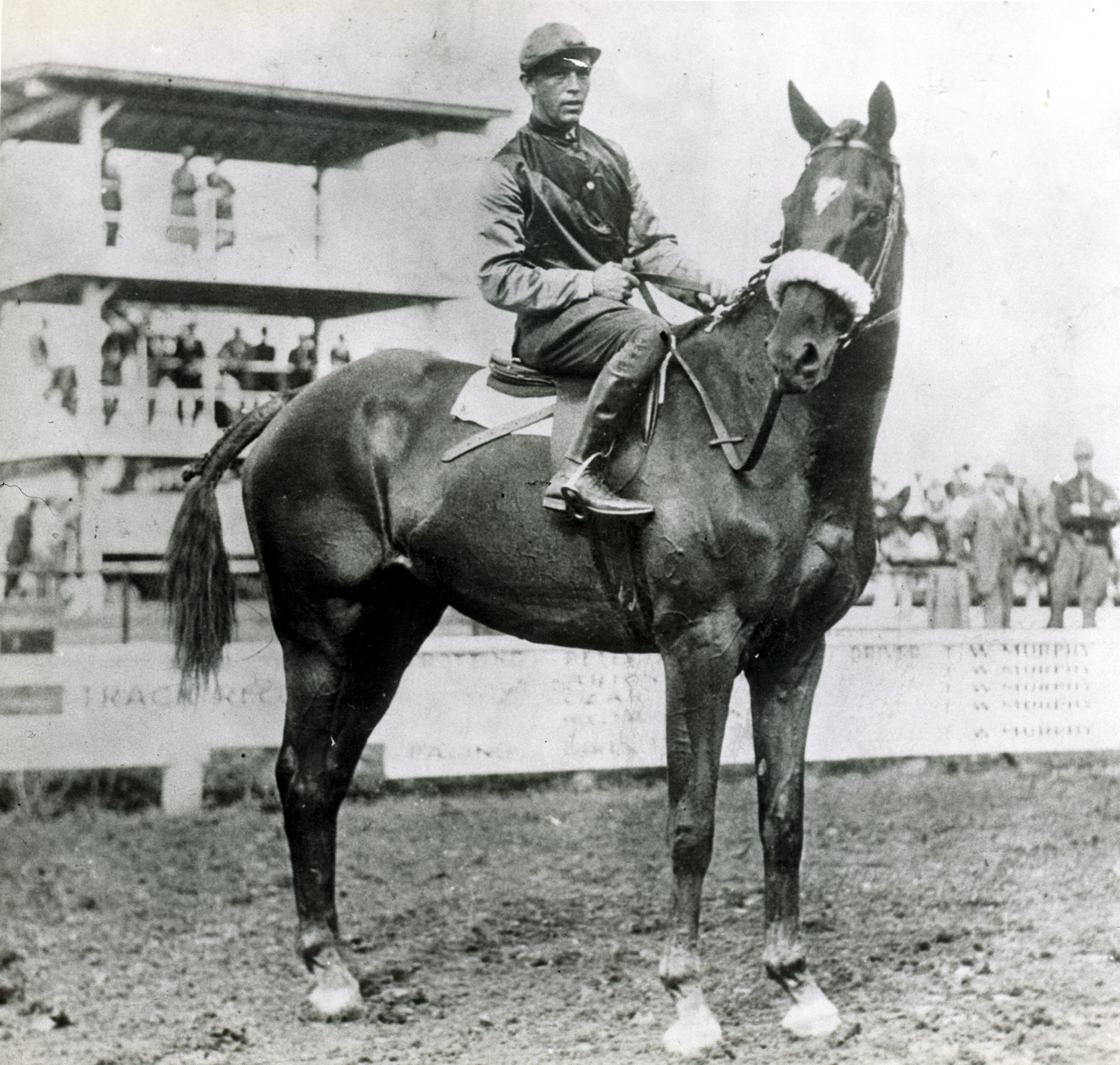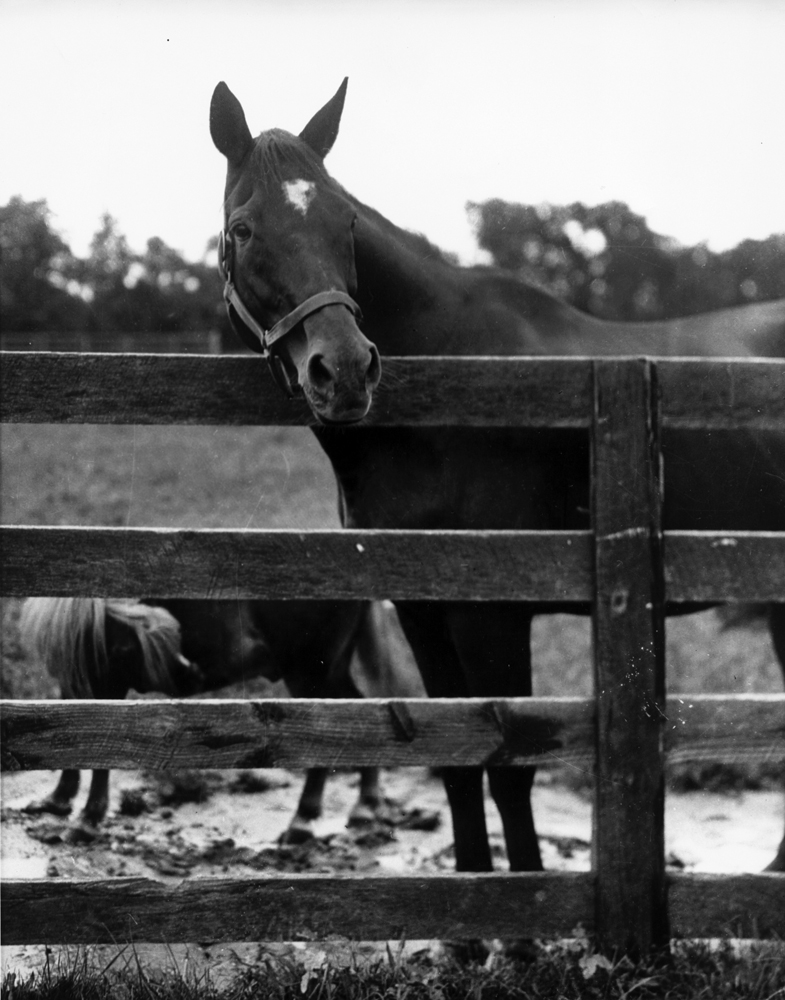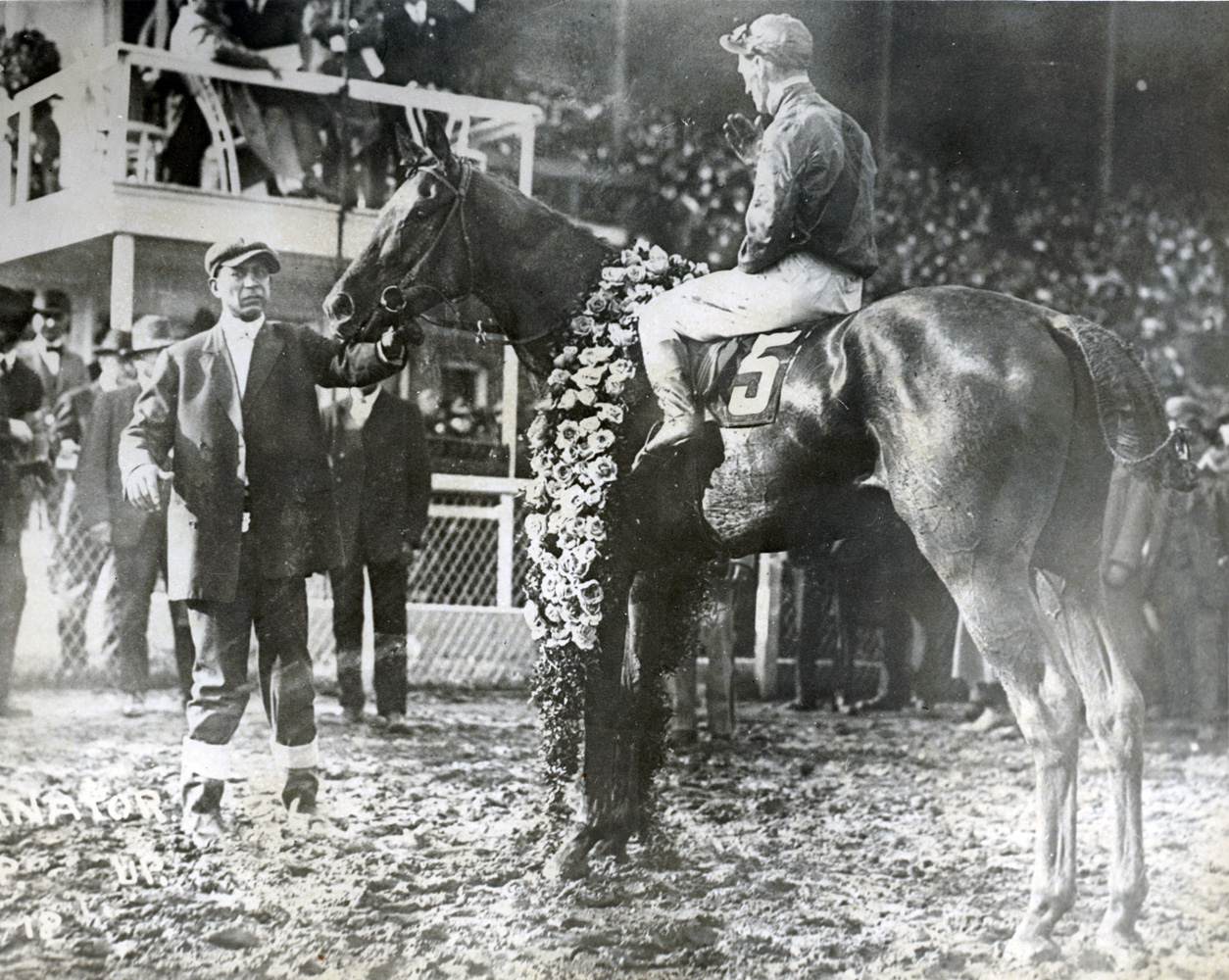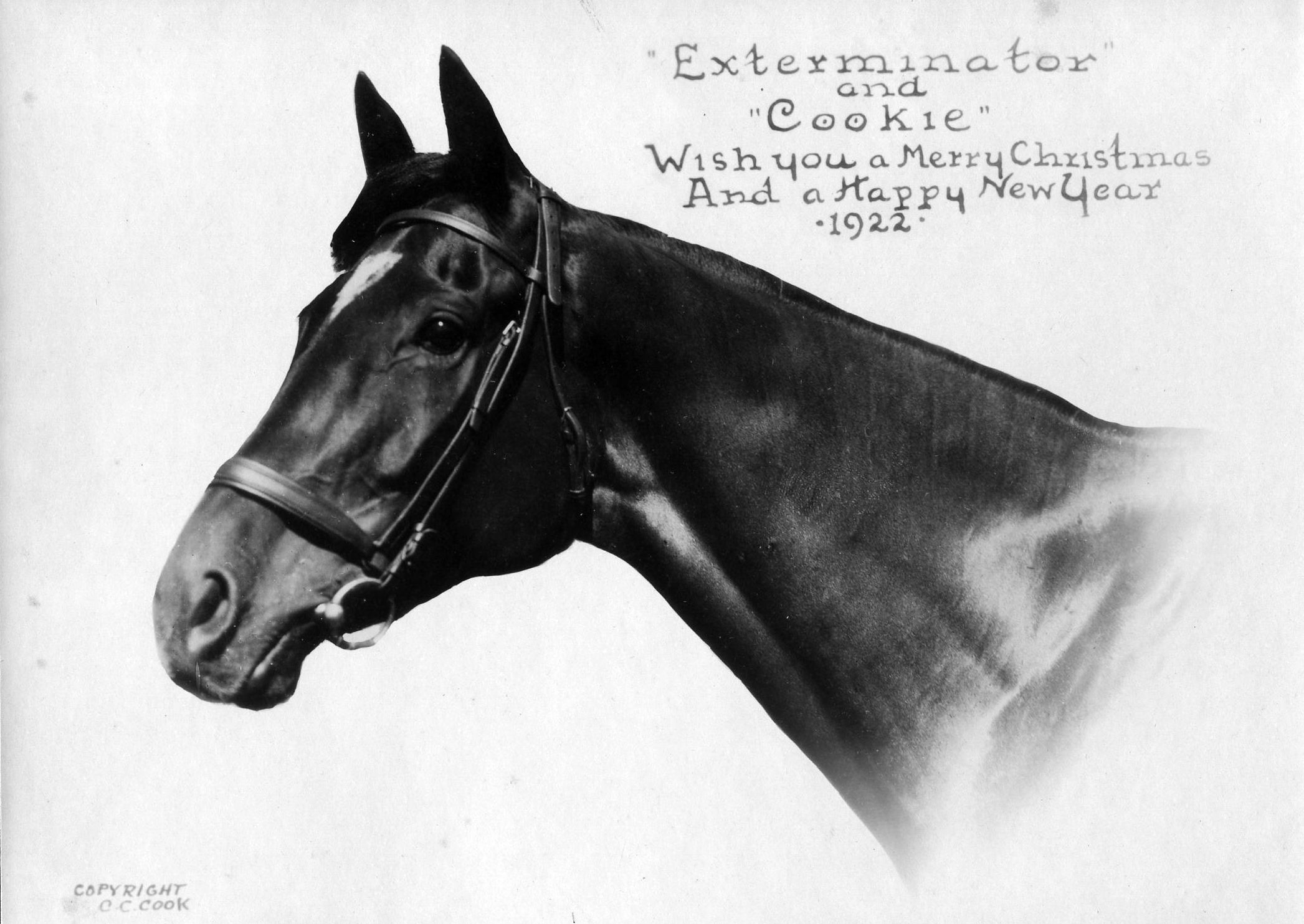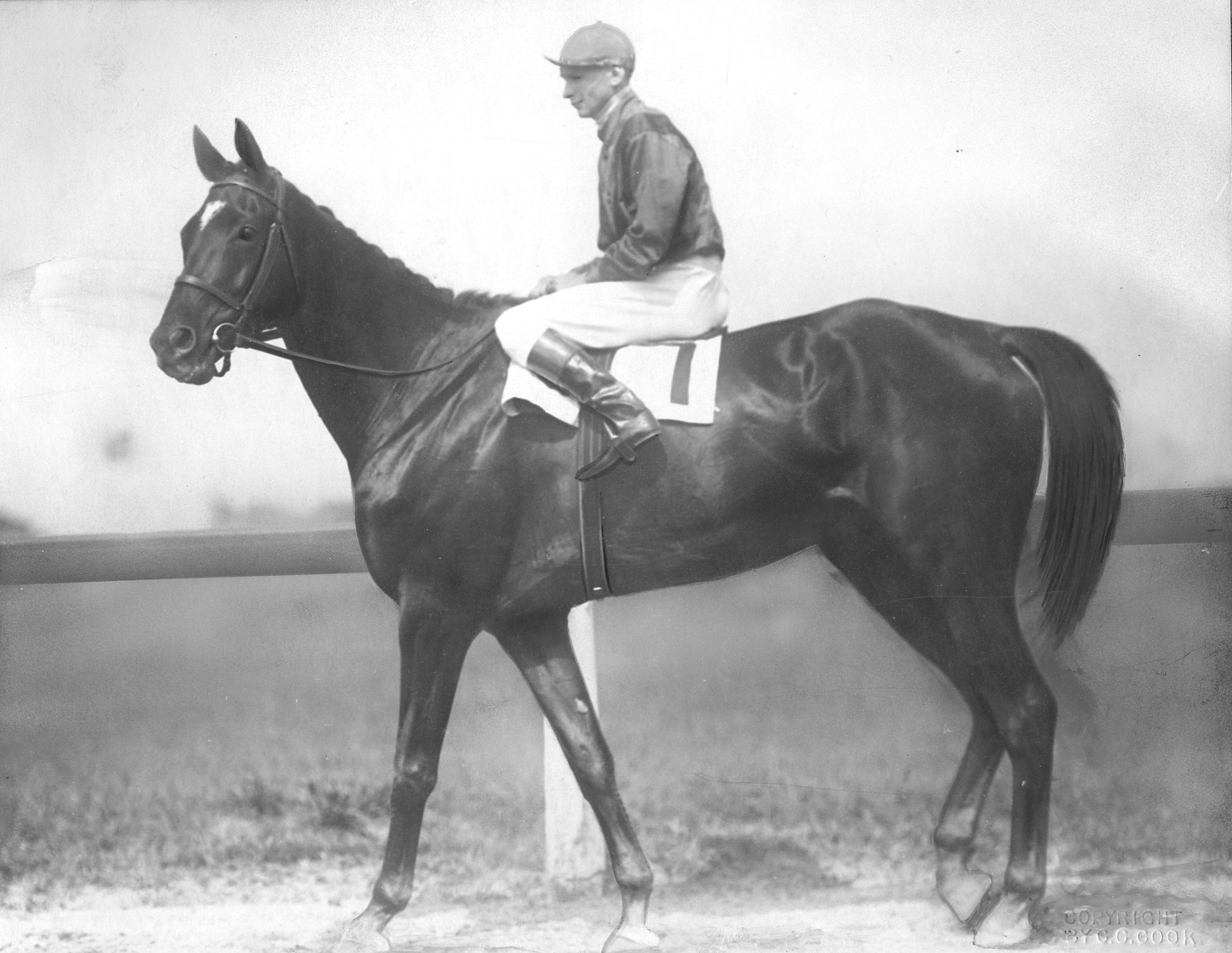Exterminator (KY)
Exterminator never won a beauty contest, and he certainly didn’t dazzle in any conformation photos, but on the racetrack he was a gritty hero during a golden age in racing and one of the most triumphant warriors in the history of the American turf.
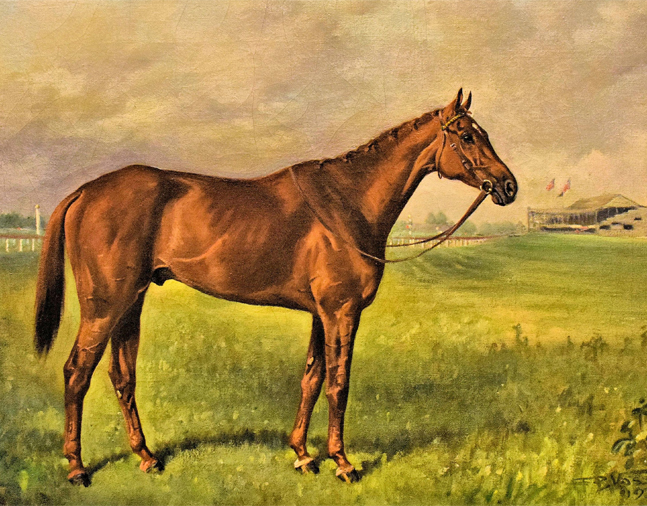
F. D. "Dixie" Knight
J. Cal Milam
Willis Sharpe Kilmer
J. Cal Milam
Henry McDaniel
J. Simon Healy
William McDaniel
Fred Curtis
Willie Knapp
Eugene Wayland
William Shields
John I. Smith
Mike Terry
1917-1924
$252,996
Racing Record
100
Starts
| 1917 | 4 | 2 | 0 | 0 | $1350 $1,350 |
| 1918 | 15 | 7 | 4 | 3 | $36147 $36,147 |
| 1919 | 21 | 9 | 6 | 3 | $26402 $26,402 |
| 1920 | 17 | 10 | 3 | 2 | $52805 $52,805 |
| 1921 | 16 | 8 | 2 | 5 | $56827 $56,827 |
| 1922 | 17 | 10 | 1 | 1 | $71075 $71,075 |
| 1923 | 3 | 1 | 1 | 1 | $4250 $4,250 |
| 1924 | 7 | 3 | 0 | 2 | $4140 $4,140 |
Biography
Exterminator never won a beauty contest, and he certainly didn’t dazzle in any conformation photos, but on the racetrack he was a gritty hero during a golden age in racing and one of the most triumphant warriors in the history of the American turf.
Exterminator shocked the world in the Kentucky Derby. He developed into one of the greatest distance runners ever. He garnered a nation of loyal admirers. He found his way to the Hall of Fame. Not bad for a horse described as “Old Bones” because of his lanky and scrawny appearance.
Foaled May 30, 1915, on a farm near Nicholasville, Kentucky, Exterminator was sired by McGee, a successful stallion who topped the sire list for progeny earnings in 1922 and ranked in the top 20 in progeny earnings 11 times through 1940. He was also the sire of 1913 Kentucky Derby winner Donnerail. Exterminator’s dam was Fair Empress, a daughter of Jim Gore, a stakes-winning son of the mighty Hindoo, the 1881 Kentucky Derby winner and arguably the greatest thoroughbred of the 19th century. Appearing three times in the pedigree of Fair Empress was the immortal sire Lexington, helping make the mare’s lineage “one of the stoutest families in the world” according to the Thoroughbred Record.
Although his bloodlines were impressive, little was thought of Exterminator when he was consigned to the 1916 Saratoga yearling sales. Without fanfare or any attention from the press, Kentucky-based owner/trainer J. Calvin Milam purchased the McGee—Fair Empress chestnut colt, American Stud Book No. 84,588, for the tidy sum of $1,500. Although described as “too lean and growthy” at the Saratoga sales, Milam though he had something special.
Exterminator made his debut in a six-furlong maiden race at Latonia Race Course in Kentucky on June 30, 1917. Sent off at odds of 5-1, Exterminator carried 109 pounds and won by three lengths. He was then shipped to Canada, where he raced three more times as a juvenile. He added one more win before his season was cut short because of an injury in late July 1917.
The following spring, Exterminator was sold to Willis Sharpe Kilmer for a reported $9,000. Although Milam liked the colt, he believed the return he was getting on his initial investment of $1,500 was too good to pass up. Kilmer didn’t have any visions of greatness for Exterminator. The new owner viewed Exterminator strictly as a work horse to help with the training of his promising colt, Sun Briar, the early Kentucky Derby favorite. Sun Briar, trained by Henry McDaniel, was regarded as the top 2-year-old of 1917 thanks to wins in the Great American, Hopeful, Saratoga Special, Albany, and Grand Union.
Sun Briar, however, was training poorly leading up to the Derby and Kilmer decided not to enter him in the Run for the Roses. That left Exterminator to represent Kilmer in the race. At odds of 30-1, Exterminator was an afterthought in the Derby. After all, he hadn’t raced in almost 10 months and had never gone more than six furlongs.
On May 11, 1918, Exterminator secured his spot in history with a stunning one-length victory over Escoba in the 45th running of the Kentucky Derby under Hall of Fame jockey Willie Knapp (who briefly became Exterminator’s trainer later in his career).
Exterminator made 15 starts as a 3-year-old, winning seven and finishing in the money 14 times. Still, he wasn’t receiving universal acclaim. Kilmer remained adamant that Exterminator wasn’t as good as Sun Briar and journalist Walter Vosburgh said “Exterminator is another of the angular, long-muscled type, and, like most of that type, a slow beginner — long striding horses usually are. Not attractive to the eye, in fact an unattractive gelding. After he has had a hard period of racing, he is as lean and hungry looking as Caesar described Cassius — high in bone and low in flesh.”
As he got older, Exterminator only got better. At age 5 in 1920, Exterminator set two world records. He won the 1¾-mile Saratoga Cup in 2:56⅘ and the two-mile Autumn Gold Cup in 3:21⅘, as well as eight other races. Exterminator was becoming a sensation on the track, but he was still being knocked in the press.
“ … the Abe Lincoln of race horses,” The New York Herald wrote. “He is 16.2 hands high, and he has the tall, ungainly, gangling form of an equine backwoodsman, with the amiable, affectionate disposition of a family buggy horse.
“Exterminator isn’t old … but he is hollow above the eyes like an old horse, and is such a homely, awkward, dejected looking figure when standing around without anything to do with those long legs of his that anybody would be excusable for guessing he was older.”
Although Kilmer always favored Sun Briar over Exterminator, McDaniel became quite fond of Old Bones.
“Exterminator is the most honest, generous, and admirable horse I have ever trained,” McDaniel said. “Some of the best horsemen in the country have been a long time learning to take Exterminator seriously.”
Exterminator won half of his 16 races as a 6-year-old in 1921. He enjoyed his best season at age 7 in 1922 when he won 10 of 17 starts, while carrying an average of 133 pounds and a high weight of 140. Exterminator’s most memorable race of the year was the Brooklyn Handicap on June 16 at Aqueduct. Burdened with 135 pounds, Exterminator defeated future Hall of Famer Grey Lag, the 1921 Belmont Stakes winner, by a head in a thrilling contest. Grey Lag was carrying just 126 pounds.
Old Bones continued to race at ages 8 and 9, but he was no longer the same. He was retired after his 1924 season with 50 victories from 100 starts and earnings of $252,996. He eventually settled at Kilmer’s Sun Briar Court in Binghamton, New York, where he lived out his remaining days in peace with a succession of stable ponies, all of which were named Peanuts.
Exterminator died at the age of 30 on Sept. 26, 1945, and was buried in Binghamton next to his old stablemate, Sun Briar. Old Bones left behind a legacy that will never be forgotten in racing annals. He won 20 times while carrying 130 pounds or more and won 11 races at distances ranging from 1½ miles to 2¼ miles. Those who doubted Exterminator during his racing days and were critical of his unconventional appearance finally gave Old Bones the praise he had long been denied.
In September 1945, the Thoroughbred Record stated: “A heart attack suffered by Exterminator, faithful ‘Old Bones’ to the fans of a quarter-century ago, put the final footnote to the career of a horse that stirred more genuine affection in the hearts of man than any other Thoroughbred the American turf has ever known.”
Joe Palmer, in the 1945 volume of “American Race Horses,” said: “He lived a little over thirty years, a great age for a horse. Many horsemen thought him the greatest horse they had seen; many racing people who had never seen him knew of him as a sort of symbol of indestructibility, of stamina, and of thoroughbred courage.”
Achievements
Horse of the Year — 1922
Champion Older Male — 1920
Champion Older Male — 1921
Champion Older Male — 1922
Triple Crown Highlights
Won the Kentucky Derby — 1918
Media
